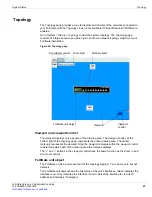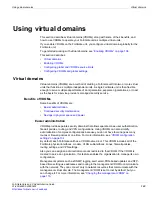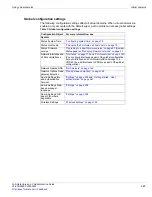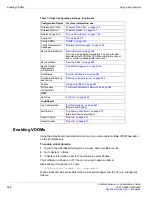
Managing firmware versions
Backing up your configuration
FortiGate Version 4.0 Administration Guide
01-400-89802-20090424
93
•
2
Enter the following to back up the configuration file to a TFTP or FTP server:
execute backup config {tftp | ftp
}
<backup_filename>
<tftp_server_ipaddress> <ftp server [:ftp port] <ftp_username>
<ftp_passwd> <encrypt_passwd>
3
Enter the following to back up the configuration to a FortiGuard Analysis and
Management server:
execute backup config management-station <comment>
To back up the entire configuration file through the CLI
Enter the following to back up the entire configuration file:
execute backup full-config {tftp | ftp | usb} <backup_filename>
<backup_filename> <tftp_server_ipaddress> <ftp server [:ftp
port] <ftp_username> <ftp_passwd> <encrypt_passwd>
Backing up your configuration to a USB key
If your FortiGate unit has a USB port, you can back up your current configuration to a USB
key. When backing up a configuration file to a USB key, verify that the USB key is
formatted as a FAT16 disk. The FAT16 format is the only supported partition type. For
more information, see
“Formatting USB Disks” on page 261
.
Before proceeding, ensure that the USB key is inserted in the FortiGate unit’s USB port.
To back up your configuration to the USB key
1
Go to
System > Maintenance > Backup & Restore
.
2
Select
USB Disk
from
Backup configuration to
list.
If you want to encrypt your configuration file to save VPN certificates, select the
Encrypt configuration file
check
box, enter a password, and then enter it again to
confirm.
3
Select
Backup
.
After successfully backing up your configuration file, either from the CLI or the web-based
manager, proceed with upgrading to FortiOS 4.0.
Summary of Contents for Gate 60D
Page 705: ...www fortinet com...
Page 706: ...www fortinet com...






























